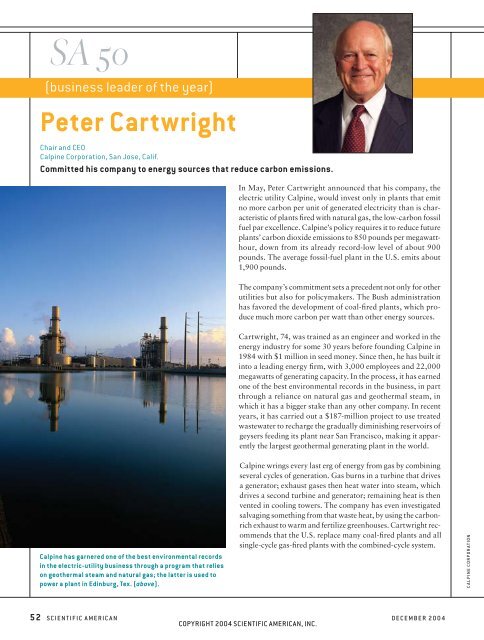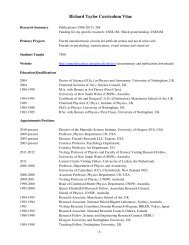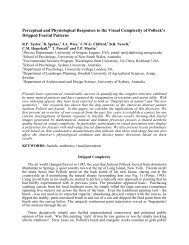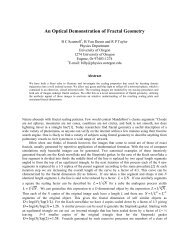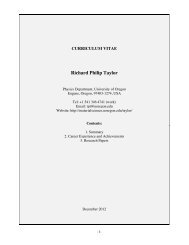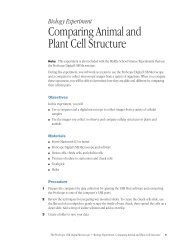December 2004 - Materials Science Institute - University of Oregon
December 2004 - Materials Science Institute - University of Oregon
December 2004 - Materials Science Institute - University of Oregon
Create successful ePaper yourself
Turn your PDF publications into a flip-book with our unique Google optimized e-Paper software.
SA 50<br />
(business leader <strong>of</strong> the year)<br />
Peter Cartwright<br />
Chair and CEO<br />
Calpine Corporation, San Jose, Calif.<br />
Committed his company to energy sources that reduce carbon emissions.<br />
In May, Peter Cartwright announced that his company, the<br />
electric utility Calpine, would invest only in plants that emit<br />
no more carbon per unit <strong>of</strong> generated electricity than is characteristic<br />
<strong>of</strong> plants fi red with natural gas, the low-carbon fossil<br />
fuel par excellence. Calpine’s policy requires it to reduce future<br />
plants’ carbon dioxide emissions to 850 pounds per megawatthour,<br />
down from its already record-low level <strong>of</strong> about 900<br />
pounds. The average fossil-fuel plant in the U.S. emits about<br />
1,900 pounds.<br />
The company’s commitment sets a precedent not only for other<br />
utilities but also for policymakers. The Bush administration<br />
has favored the development <strong>of</strong> coal-fi red plants, which produce<br />
much more carbon per watt than other energy sources.<br />
Cartwright, 74, was trained as an engineer and worked in the<br />
energy industry for some 30 years before founding Calpine in<br />
1984 with $1 million in seed money. Since then, he has built it<br />
into a leading energy fi rm, with 3,000 employees and 22,000<br />
megawatts <strong>of</strong> generating capacity. In the process, it has earned<br />
one <strong>of</strong> the best environmental records in the business, in part<br />
through a reliance on natural gas and geothermal steam, in<br />
which it has a bigger stake than any other company. In recent<br />
years, it has carried out a $187-million project to use treated<br />
wastewater to recharge the gradually diminishing reservoirs <strong>of</strong><br />
geysers feeding its plant near San Francisco, making it apparently<br />
the largest geothermal generating plant in the world.<br />
Calpine wrings every last erg <strong>of</strong> energy from gas by combining<br />
several cycles <strong>of</strong> generation. Gas burns in a turbine that drives<br />
a generator; exhaust gases then heat water into steam, which<br />
drives a second turbine and generator; remaining heat is then<br />
vented in cooling towers. The company has even investigated<br />
salvaging something from that waste heat, by using the carbonrich<br />
exhaust to warm and fertilize greenhouses. Cartwright recommends<br />
that the U.S. replace many coal-fi red plants and all<br />
single-cycle gas-fi red plants with the combined-cycle system.<br />
Calpine has garnered one <strong>of</strong> the best environmental records<br />
in the electric-utility business through a program that relies<br />
CORPORATION<br />
on geothermal steam and natural gas; the latter is used to<br />
power a plant in Edinburg, Tex. (above). CALPINE<br />
52 SCIENTIFIC AMERICAN DECEMBER <strong>2004</strong><br />
COPYRIGHT <strong>2004</strong> SCIENTIFIC AMERICAN, INC.


